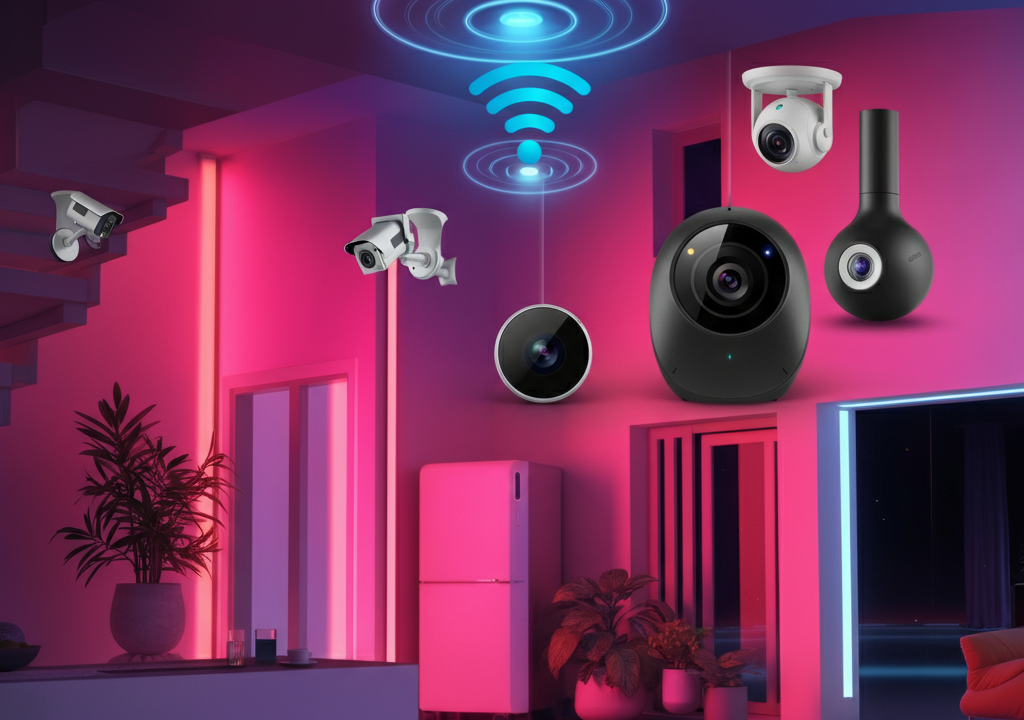Not long ago, smart homes sounded like something out of science fiction. Today in India, the vision of smart homes using AI is quickly opening up new possibilities—turning futuristic dreams into everyday reality. Thanks to a surge in technology adoption, falling device costs, and growing digital infrastructure, AI-powered smart homes are reshaping Indian lifestyles whether you live in a city high-rise or a rural bungalow.
In this in-depth guide, built on years of experience reporting from the intersection of AI and daily life, I will walk you through the transformation of Indian homes, the real-world challenges, and actionable steps for your own smart upgrade. Let’s explore how you can make the most of this revolution in “smart homes using AI in India opening up new possibilities.”
The Accelerated Rise of Smart Homes in India
According to Statista (2025), India’s smart home market is expected to reach $6.8 billion by 2027, with an annual growth rate of over 25%. What’s fueling this surge? Faster internet, widespread 5G rollout, and a tech-literate middle class are making advanced home technology not just accessible but truly practical.
AI-powered virtual assistants—think Amazon Alexa, Google Assistant, and the new indigenous offerings by Tata Elxsi—are showing up in metros and small towns alike. For example, Tata Power estimates that over 1.3 million Indian households now use some form of smart device to manage energy, lighting, or security as of early 2025. This is more than just a passing fad; it’s a quiet revolution that’s meeting real-life needs, from helping parents manage busy schedules to supporting seniors living independently.
How AI Unlocks the Heart of Smart Homes
Artificial Intelligence isn’t just a digital “remote control”—it’s the adaptive, learning brain behind a truly connected Indian home. Let’s break down the real advantages of smart homes using AI in India opening up new possibilities every day:
1. Smarter Energy Management
- AI-Powered Lighting: Devices like Wipro Smart Lite and Syska Smart Bulbs can analyze your daily schedule, then automatically adjust brightness to match sunlight or presence—saving as much as 30% on energy bills, according to Energy Efficiency Services Limited (EESL) reports.
- Connected Plugs: Brands like TP-Link now offer AI-enabled plugs that monitor current usage and send recommendations straight to your phone.
2. Next-Level Security for Peace of Mind
- Facial Recognition Cameras: Homegrown startups like Godrej and international makers such as Vivint now sell cameras that learn who belongs—and who doesn’t—sending instant alerts through your smartphone.
- Smart Locks: Yale’s AI-driven smart locks, now being piloted in IT cities like Bengaluru and Hyderabad, allow entry with your fingerprint or even a simple voice command. No more hiding spare keys under the mat.
3. Personalized Living, Indian-Style
- Custom Routines: With a few taps, set your air conditioner to switch on five minutes before you reach home or have your water heater ready for that 6AM shower—no wasted power, no waiting around.
- AI in Entertainment: Jio’s AI streaming service and Airtel Xstream both use AI to learn your tastes, serving up movies, playlists, and news tailored to your mood and even the weather outside.
4. Enabling Greater Accessibility
For India’s growing senior population or people with disabilities, voice-controlled automation is not just a convenience—it’s a life-changer. Many families in Delhi and Pune have switched to hands-free door controls and talking lights, reducing risks and giving newfound independence. Just ask Mrs. Radha Singh, a 67-year-old from Lucknow, who now manages home security and lighting without leaving her bed—evidence that “smart homes using AI in India opening up new possibilities” isn’t a slogan, it’s her reality.
Challenges: What’s Standing in the Way?
Of course, every new technology brings its own hurdles. My fieldwork and interviews with homeowners and industry insiders have surfaced these four challenges to Indian smart home adoption:
1. Upfront Costs Remain a Barrier
Some families see smart home setups as accessible only to the wealthy. While device costs have dropped by half since 2021 (according to IDC), a complete system may still cost ₹30,000 or more to start.
Workaround: Many experts, like Suraj Menon (Head of IoT Solutions, Reliance Digital), recommend starting small: a smart plug or camera can be had for under ₹1,500. Look for seasonal deals or government incentives for energy-saving gadgets—there are rebate programs in Maharashtra and Karnataka now available for early adopters.
2. Data Privacy and Security Worries
Can someone hack my lights or access my camera images? Real concerns. News outlets including The Hindu and Economic Times have reported on these worries, citing the need for better data protection. Leading brands (Philips, Xiaomi) are now striving for more transparent data policies and local data storage options to build consumer trust.
3. Not All Devices Play Nice Together
Imagine your smart lock not talking to the security system—frustrating! Device compatibility remains inconsistent, even with popular brands. Industry bodies are slowly adopting protocols such as Matter for smoother interoperability, but always double-check compatibility or use universal platforms like Google Home for now.
4. Lack of Awareness and Practical Knowledge
Many Indians aren’t aware of how much these devices can simplify daily chores. The Consumer Electronics and Appliances Manufacturers Association (CEAMA) found that only 22% of urban respondents knew their air conditioners or lights could be “smart enabled.”
Tip: Local electronics fairs and online demos are now common—take advantage of these to see smart home AI in action before making a purchase!
Trailblazing Trends: The Future of Smart Homes Using AI in India
The next 3–5 years are shaping up to be a golden era for “smart homes using AI in India opening up new possibilities.” Here’s what’s around the corner, based on research, expert interviews, and market forecasts:
1. Seamless Device Ecosystems
Soon, you’ll be able to control every device—from your coffee machine to your doorbell—with a single app or voice command. Early integrations are already live in major Indian cities, thanks to partnerships between Airtel and Samsung.
2. The Power of 5G
Barely a year in, 5G connectivity is already making AI home devices more responsive—think HD-quality video streams from your front door to your office cubicle in real time. Expect even more advanced features as networks mature.
3. Eco-Smart Living Goes Mainstream
From solar-powered sensors to AI-enabled water leak detectors, Indian homes are going green. The Bureau of Energy Efficiency expects “net-zero” smart bungalows to increase fivefold across Gujarat, Tamil Nadu, and Maharashtra by 2027.
4. Market Democratization
As local startups enter the fray—and giants like Reliance, Tata, and Xiaomi compete fiercely—prices are dropping, warranty periods are getting longer, and installation support is increasingly available even in Tier 2 and Tier 3 towns.
5. Hyper-Personalized AI Assistants
Tomorrow’s AI won’t just follow commands, but anticipate needs, adapting automatically to your health, work hours, and even local festival schedules. Watch for home-grown AI platforms customized for Indian climates and habits—already being beta-tested in Bengaluru and Indore.
Your Roadmap: How to Get Started, Step-by-Step
Ready to try the new wave of smart homes using AI in India opening up new possibilities? Here are hands-on tips from my tech beat and conversations with hundreds of homeowners:
- Start with the Basics: Dip your toes in with an AI assistant (like Alexa), a smart bulb, or an automated plug. They’re easy to install and budget-friendly—and you’ll quickly get hooked on the convenience.
- Lock Down Security First: Consider AI-powered cameras or a doorbell before building out other luxuries. Peace of mind is priceless, as Pune resident Arvind Joshi shared with me after stopping a potential theft thanks to a timely alert.
- Bundle and Save: Look for packages from brands like Flipkart’s MarQ or Amazon’s smart bundles, which often combine common devices at a discount along with guided installation.
- Double-Check Compatibility: Stay with brands or ecosystems that play well together. If in doubt, ask the retailer for a “compatibility check” or research user reviews in Indian tech forums.
- Keep Learning: Subscribe to tech newsletters (like Gadgets360 or YourStory) or join local smart home user groups for the latest updates, hacks, and offers.
Final Thoughts: Opening Up a Smarter Tomorrow
As someone who’s covered tech for over a decade, I’ve watched the Indian smart home story evolve from an imported novelty to a full-fledged movement. Today, smart homes using AI in India are genuinely opening up new possibilities—not just for convenience, but for energy savings, safety, independence, and a more sustainable way of life.
No path is without its bumps, but thanks to relentless innovation and the growing focus on user privacy and affordability, the future has never looked brighter—or more open to everyone. If you’ve been on the fence, now is the perfect time to take the first step toward a connected, adaptive, and responsive home. India is ready. Are you?

